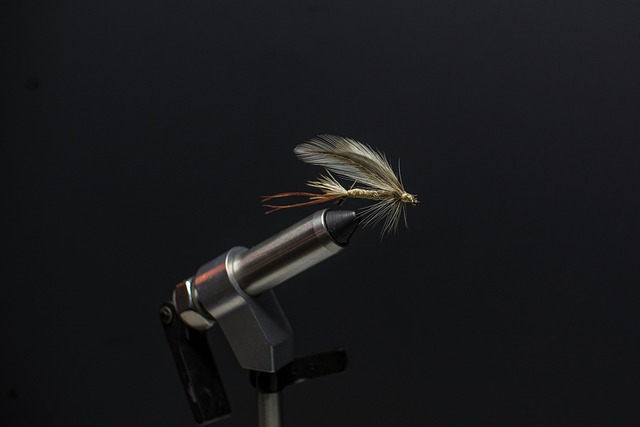Implementing effective residential fly control requires a strategic approach addressing both indoor and outdoor environments. Key steps include understanding fly life cycles, habitats, and behaviors; combining preventive measures like sealing entry points and eliminating water sources with targeted species-specific treatments; conducting regular inspections and seasonal adjustments to identify and address emerging populations; maintaining indoor hygiene by eliminating breeding grounds and sealing entry points; managing outdoor areas by eliminating stagnant water, securing trash bins, and cleaning dining spaces; and committing to year-round maintenance with seasonal adjustments based on weather and environmental factors for comprehensive results.
In the quest for a pest-free home, understanding comprehensive residential fly control is paramount. Flies pose more than just an inconvenience; they can spread diseases and breed rapidly. This article delves into the crucial aspects of indoor and outdoor fly treatments, offering a strategic approach to eliminating breeding grounds and preventing infestations. From identifying key breeding areas inside your home to managing outdoor environments, we explore effective methods for sustained fly control, ensuring a healthier living space.
Understanding Residential Fly Control: The Importance of a Comprehensive Approach
Implementing effective residential fly control requires a comprehensive approach that addresses both indoor and outdoor environments. Flies are persistent pests that can quickly breed and spread diseases, making proactive measures essential for maintaining a healthy living space. A thorough understanding of their life cycles, preferred habitats, and behaviors is crucial for successful control.
A comprehensive strategy should involve a combination of preventive measures, such as sealing entry points and eliminating standing water, along with targeted treatments tailored to specific fly species. Regular inspections and seasonal adjustments are key to identifying and mitigating emerging fly populations, ensuring ongoing protection for homeowners and their families.
Indoor Fly Treatment Strategies: Eliminating Breeding Grounds
To implement effective indoor fly treatment strategies, a primary focus should be on eliminating breeding grounds. For residential fly control, this involves identifying and addressing any stagnant water sources within and around the home. Flies, particularly common houseflies, breed in standing water, so removing or treating these sites is crucial for preventing their influx. Common areas of concern include clogged gutters, birdbaths, old tires, buckets, and flower pots that collect water.
Regular maintenance, such as cleaning gutters and replacing birdbath water frequently, can significantly reduce fly populations. Additionally, sealing entry points like cracks and gaps in windows and doors helps keep flies out. In combination with these measures, professional residential fly control services may employ specialized treatments to ensure thorough and long-lasting results, further enhancing the comfort and hygiene of indoor spaces.
Outdoor Fly Management: Preventing Infestations from the Outside In
Outdoor Fly Management: Preventing Infestations from the Outside In
In the quest for comprehensive protection, outdoor fly management is a crucial component that often gets overlooked. Residential fly control starts with understanding how flies enter your living space. With their short flight range and attraction to food, odor, and standing water, flies commonly find their way indoors through open doors, windows, or cracks in walls and foundations. Implementing robust outdoor fly treatments is essential to stop infestations before they begin.
This involves addressing breeding grounds around the property, such as eliminating stagnant water sources, maintaining proper drainage, and securing trash bins with tight-fitting lids. Regularly trimming vegetation and cleaning outdoor dining areas also helps deter flies from seeking entry into residential spaces. By creating a fly-unfriendly environment outside, you significantly reduce the risk of indoor invasions, ensuring a more comfortable and hygienic living space for all.
Sustaining Effective Fly Control: Maintenance and Seasonal Considerations
Maintaining effective fly control requires ongoing efforts and seasonal adjustments for optimal results in residential areas. Fly populations can surge during certain times of the year due to changing weather patterns and environmental conditions, making it essential to implement a proactive approach. Regular maintenance involves keeping outdoor spaces clean and free from potential breeding grounds like stagnant water, decaying organic matter, and cluttered debris. Promptly addressing any observed fly activity through thorough inspections is crucial.
Seasonal considerations play a significant role in residential fly control strategies. For instance, spring and summer months often witness increased fly populations due to warmer temperatures and abundant food sources. Implementing preventive measures such as sealing entry points, repairing screens, and ensuring proper waste management can significantly reduce indoor fly presence. During autumn and winter, while outdoor activity decreases, interior spaces might become more appealing to flies seeking shelter, necessitating continuous monitoring and targeted treatments when needed.
Implementing a robust residential fly control strategy involves a multi-faceted approach that combines indoor and outdoor treatments for comprehensive protection. By understanding the importance of eliminating breeding grounds, preventing infestations from external sources, and maintaining seasonal considerations, homeowners can effectively manage fly populations year-round. Adopting these strategies ensures a healthier, more comfortable living environment, showcasing the significance of a thorough and well-rounded residential fly control method.
